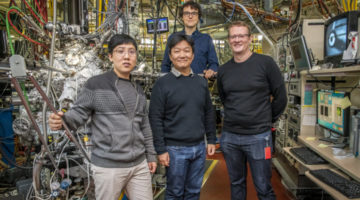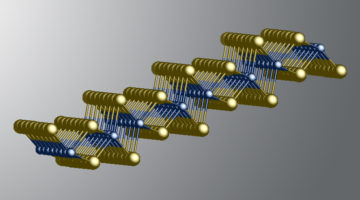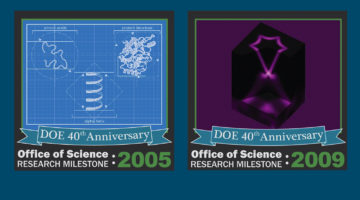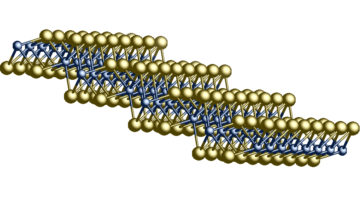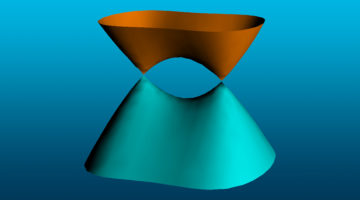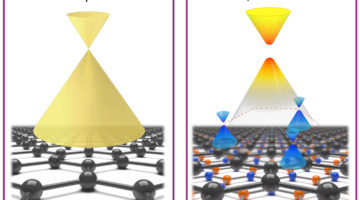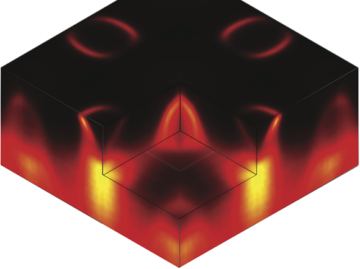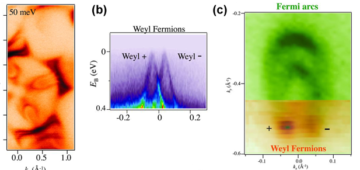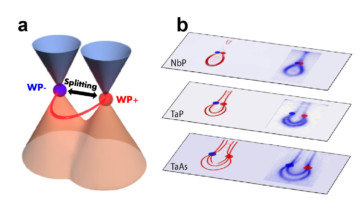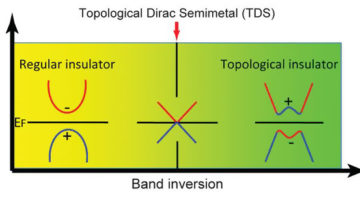An experiment has demonstrated, for the first time, electronic switching in an exotic, ultrathin material that can carry a charge with nearly zero loss at room temperature. The ease in switching the material from an electrically conducting state to an insulating, or non-conducting state, bodes well for its future transistor applications. Read more »
Researchers Confirm New 2D Topolgical Insulator
Researchers have established that a particularly stable form of WTe2 is a two-dimensional topological insulator, confirming recent predictions. The findings should provide new opportunities for fundamental studies of topological phenomena and for next-generation spintronic applications. Read more »![]()
![]()
ALS Work Highlighted in DOE Top 40 Countdown
To celebrate DOE’s 40th anniversary (October 1, 2017), the Office of Science (SC) collected 40 scientific milestones from the previous 40 years, each one supported by SC. The ALS played a key role in two of the milestones: 2005 (ribosome) and 2009 (topological materials). Read more »
2D Material’s Traits Could Send Electronics R&D Spinning in New Directions
Working at the ALS, researchers have found another family of materials where they can both explore the physics of 2D topological insulators and do experiments that may lead to future applications. The material—known as 1T’-WTe2—bridges two flourishing fields of research: that of so-called 2D materials and topological materials. Read more »
Strain Turns Tin into a 3D Topological Dirac Semimetal
A small amount of compressive strain turns a nonmetallic form of tin into a 3D topological Dirac semimetal—a kind of “supermetal” with very high electron mobility. With its rich topological phase diagram, the material shows promise for both novel physics and eventual device applications. Read more »![]()
![]()
Altered States in Graphene Heterostructures
ARPES directly reveals for the first time how electronic states are altered when epitaxial graphene is deposited on a substrate of hexagonal boron nitride (h-BN). The interaction between the materials in this heterostructure greatly improves its suitability for advanced, ultralow-power device applications. Read more »![]()
![]()
A New Universal Parameter for Superconductivity
Scientists have been researching high-temperature (high-Tc) superconductors for decades with the goal of finding materials that express superconducting capabilities at room temperature, which would be a requirement for practical and cost-effective applications. The newest materials to gain scientific interest are iron-based superconductors, and the latest research from the ALS on these materials indicates a new factor that determines their superconductivity. Read more »![]()
![]()
Weyl Fermions Discovered After 85 Years
Weyl fermions, elusive massless particles first theorized 85 years ago, have now been detected as emergent quasiparticles in synthetic crystals of the semimetal TaAs. The discovery could allow for the nearly free and efficient flow of electricity, as well as the realization of many fascinating topological quantum phenomena.
Discovery of Weyl Semimetals May Lead to Novel Future Spintronic Applications
A team of researchers using angle-resolved photoemission spectroscopy (ARPES) at ALS Beamline 10.0.1 found intriguing particles in a new phase of quantum matter: topological Weyl semimetals.
Read more »
Graphene’s 3D Counterpart
ALS researchers have discovered a material that is essentially a 3D version of graphene — the 2D sheets of carbon through which electrons race at many times the speed at which they move through silicon. The discovery promises exciting new things to come for the high-tech industry, including much faster transistors and far more compact hard drives. Read more »![]()
![]()
